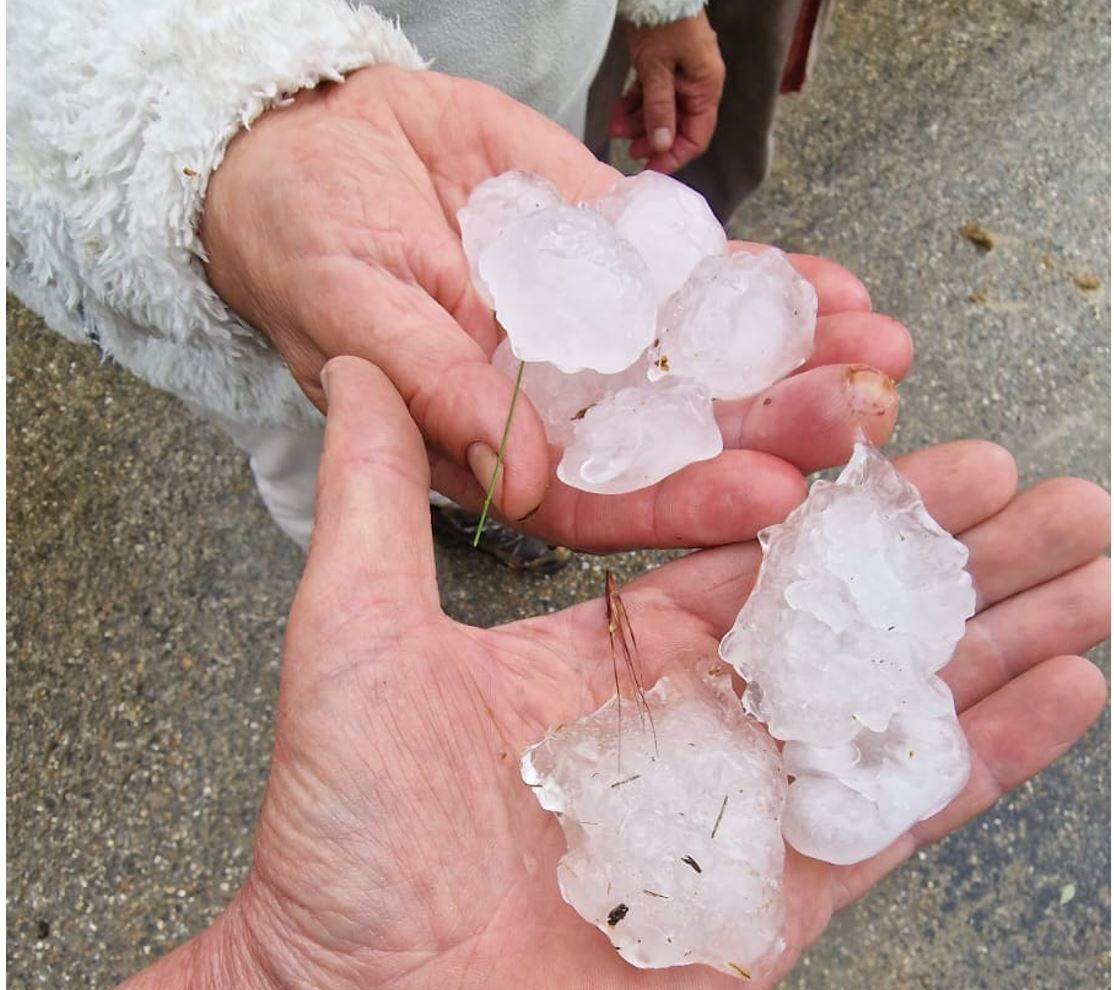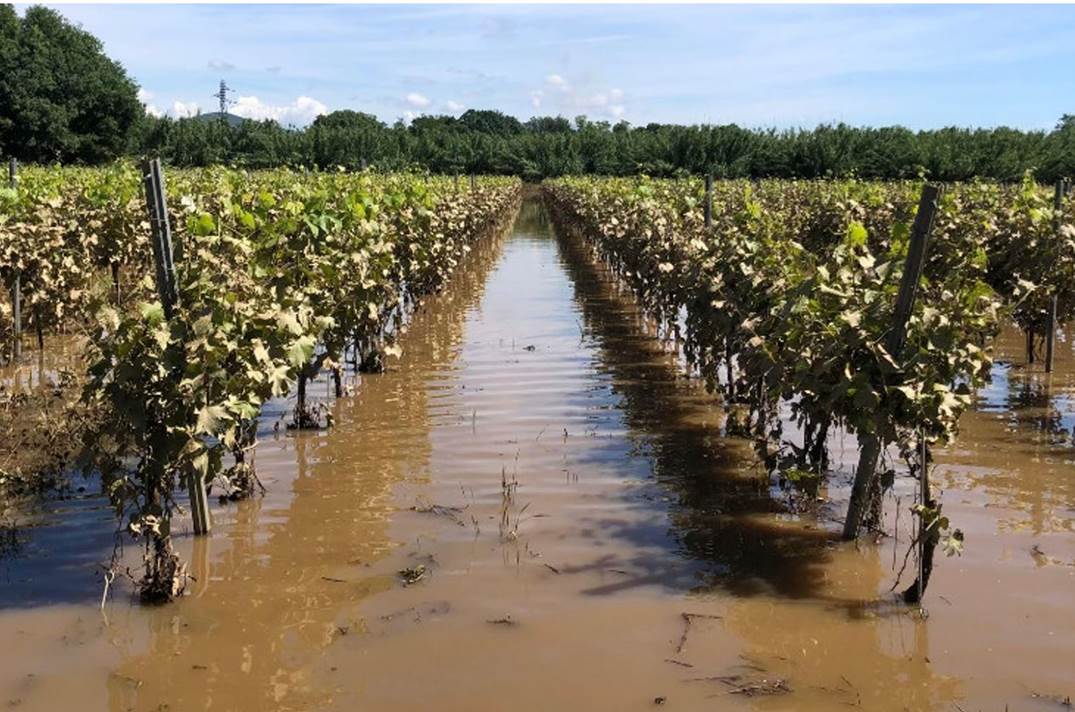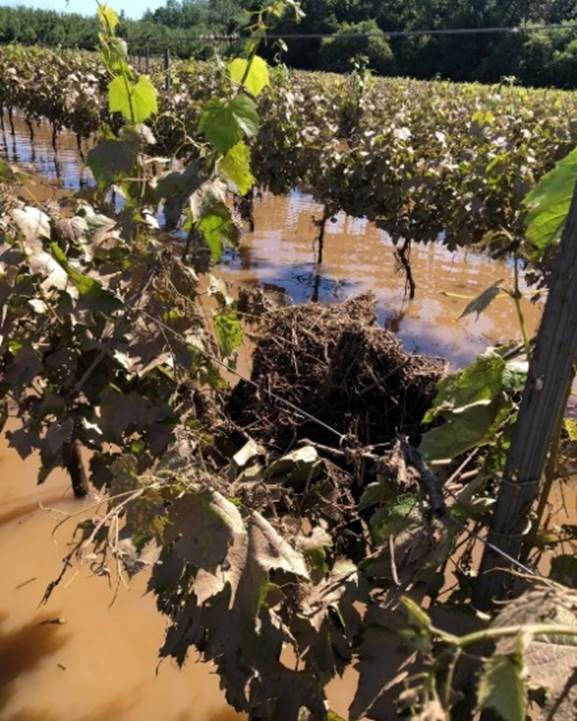The vines in the south of France are now in their delicate flowering phase as the winegrowers want warm, dry weather without wind in order to get a good harvest. But the weather forces wanted otherwise in both the Occitanie (Languedoc) and Provence. It started late in the afternoon of May 19 in the department of Haute-Garonne south of Toulouse which was hit by torrential rain and wind where hailstones larger than golf balls hit the vineyards and destroyed 50% of the vines for the worst affected.

The storm then continued east to the Aude department, with cities such as Carcassonne and Narbonne, where the vineyards west of Limoux were hit the hardest with 60 – 70% damage to approximately 700 hectares of vineyard land, equivalent to approximately 700 football fields.
The rain and wind continued unabated the following morning to Provence and settled in a small area starting in Le Lavandou, continuing to Cavalière, Cogolin near Saint Tropez and finally to Vidauban, i.e. at and around the Maures massif. Since the storm barely moved, the area was hit extremely hard with up to 230 mm of rain in just one hour! The heavy rain meant that some vineyards were submerged in up to a meter of muddy water!


It sounds unbelievable that the vineyards were put under a meter of water, but the muddy leaves in the pictures clearly show that this was the case. When the water started to drain away, it took with it branches, trees and even vines and stakes for tying.
Once again, winegrowers are complaining about environmental requirements that dictate that they are not allowed to clean ditches and watercourses, which now contributed to the water not being able to drain quickly enough. The same issue was relevant during the devastating forest fire in August 2021, see previous newsletter, which started along the A57 motorway towards Toulon and which also affected the Maures massif. Grass and weeds may not be removed mechanically there, this is in consideration of the protected species of turtle Herman, which is only found in the Maures massif and on Corsica. The uncleaned ditches then “helped” to further increase the spread of the fire.
When the water finally drained away, the winegrowers discovered that there had been a massive landslide that made the vineyards inaccessible to machinery and made it impossible to protect the vines against leaf mold by spraying. The leaf mold pressure (mildiou) was already high before this storm, so urgent spraying was necessary.
Both 2022 and 2023 were years with less rain while 2024 was a year with more normal precipitation and during the period October 2024 to May 2025, precipitation has been 70% above normal so the lands were already more water-saturated than normal, which certainly contributed to making the landslide worse.
The winegrowers were therefore very happy when the government approved spraying with drones for the first time in France the weekend after the disaster. The conditions included setting up signs, a safety zone of 20 meters from homes, etc., a maximum flight altitude of 3 meters with a maximum speed of 13 km/h, and more.
The joy was short-lived, however, as the approval only approved a certain Bordeaux liquid for aerial application and it was not available at short notice. So, the affected winegrowers had to go out into the fields with the help of mini excavators to try to restore the roads so that the tractors could reach the least affected vineyards.
Source : Vitisphere
Surely you have signed up for the Newsletter so that you receive news from the Provence wine world as well as other interesting wine news? If you have already done so, tell your wine-interested friends!

Provence expert Göran Boman, Author of the books “Provence – White, red and also rosé wines” and “The Wines of Provence – Tricolour”.